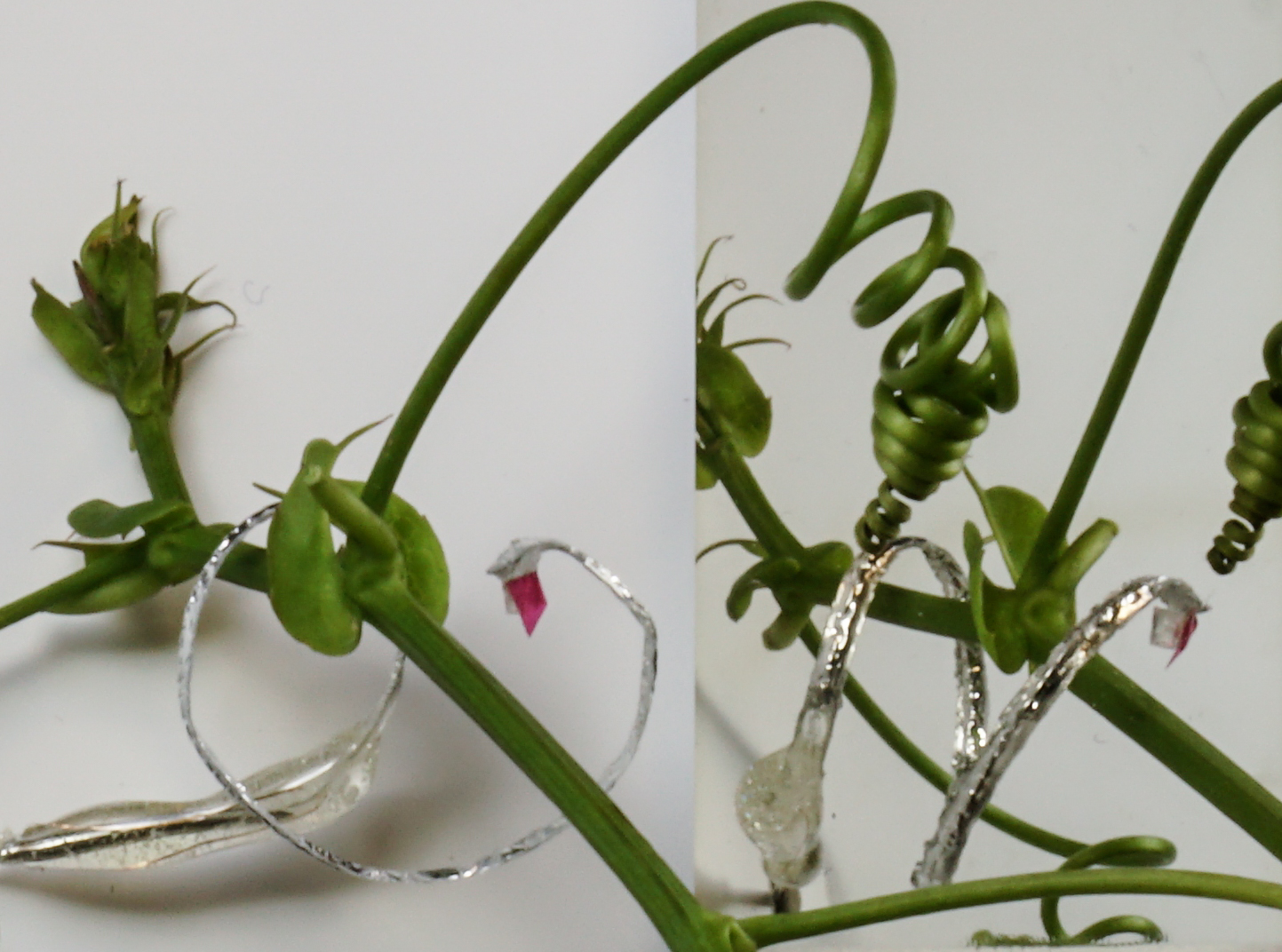Plants move at a much slower rate than what we can see. They don’t have muscles so they’ve figured out different ways to move. One way is through osmosis, which shifts water in their stems to change their stiffness.
What you see in the video is a robot actually using osmosis. This is very important for plants that climb, like vines – when they grow and search for a support, like around a branch, they start to coil around it and if they understand that this support is not good enough they will uncoil, leave the structure and find a better one.
Our (team’s) design coils and uncoils which is the first time we achieved this goal. What’s important about these tendrils is that the movement is reversible because it could someday lead to soft robots that can interact with people and delicate objects in different situations.
The robot works by using a flow of water between two other solvents that have different electrical charges, all separated by thin membranes. By passing a low electric current through the tendril the water moves from the side with a minor ionic charge to the side with a major ionic charge. By controlling the passage of the current, the soft arm in the video can coil and uncoil around supporting structures.
Adding sensors to these robotic tendrils would allow them to explore and monitor the environment in a new way. If we add a sensor for temperature or chemicals, for instance, then the capabilities of these sensors are immediately enhanced. A robot that has hundreds of these tendrils, and is mobile, in a very real environment could get a more in-depth environmental insight. This could be used to better understand air quality, agriculture systems and food safety or in other environments to detect pollutants that could be very dangerous.
The research on plants started with the PLANTOID project, which had a focus on soil exploration. We now have funding by the Tuscany region in Italy to study different criteria, like chemical levels, to better inform a human operator of the quality of soil.
The robotic tendril in the video is able to grow and reverse in about 25 minutes. In the next project, GrowBot, the idea is to develop faster robots that could move by growing while also adapting their bodies to external environments.
We see other applications (beyond the environment) to use these types of robots for rescue and exploration. They could go with a camera or another sensor and adapt to very narrow environments and structures while informing the human operator about a disaster.
‘We can create a whole new set of solutions by taking inspiration from these plants.’
Dr Barbara Mazzolai, Istituto Italiano di Tecnologia
Softness is very important to these future robots because they need to adapt their shape, but they also have to apply force to interact with their environment. This is one of the biggest challenges in soft robotics. If they are too soft then robots cannot be used for anything so we proposed a new strategy inspired by plant movements.
There are many obstacles to overcome first. One of the basic challenges is to increase our knowledge of plants. Normally, plants are studied as a source of food so there are not a lot of studies on plants as a biological model for robotics. We need to address this knowledge gap through experiments on plants to better understand their behaviour and adaption capability in different environments.
The other point is to understand what is needed from an artificial point of view. This is a part of the challenge of our approach because we cannot copy nature. We want to understand plants first then translate their best qualities to robots and technology.
The other problem we are facing is developing the right balance of mechanisms and materials. We are talking about materials that allow these robots to grow along with a sensing capability and the mechanics that make it transferrable to the external environment. We have to develop new control strategies that are not based on traditional models or methodologies. That is why GrowBot involves several disciplines – to understand plants and to focus on the various engineering aspects of the robot.
That’s exciting because the more we study plants, the more we discover their beauty. We don’t know what we have so close to us, and our lives depend on these systems, but we can create a whole new set of solutions by taking inspiration from these plants.
Barbara Mazzolai is Coordinator of the Center for Micro-BioRobotics (CMBR) at the Istituto Italiano di Tecnologia (IIT). She led the research for the PLANTOID and GrowBot projects, which were funded by the EU.
As told to Steve Gillman. This account has been edited and condensed. The views expressed in the article are those of the interviewee and do not necessarily reflect the position of the European Commission.

